| |
|
|
Botanical Name |
: |
Plantago major L. |
English
Name |
: |
Plantain. Great Plantain |
Family |
: |
Plantaginaceae |
| |
General Info
| Description |
 |
|
It grows from a very short rhizome, which bears below a great number of long, straight, yellowish roots, and above, a large, radial rosette of leaves and a few long, slender, densely-flowered spikes. The leaves are ovate, blunt, abruptly contracted at the base into a long, broad, channelled footstalk (petiole). The blade is 4 to 10 inches long and about two-thirds as broad, usually smooth, thickish, five to eleven ribbed, the ribs having a strongly fibrous structure, the margin entire, or coarsely and unevenly toothed. The flower-spikes, erect, on long stalks, are as long as the leaves, 1/4 to 1/3 inch thick and usually blunt. The flowers are somewhat purplish-green, the calyx four-parted, the small corolla bell-shaped and four-lobed, the stamens four, with purple anthers. The fruit is a two-celled capsule, not enclosed in the perianth, and containing four to sixteen seeds. |
| Herb Effects |
 |
|
The leaves are astringent, demulcent, deobstruent, depurative, diuretic, expectorant, haemostatic and refrigerant. |
Chemistry
| Active Ingredients |
 |
|
Apigenin, ascorbic acid, asperuloside, aucubin, baicalein, baicalin, benzoic acid, caffeic acid, chlorogenic acid, choline, cinnamic acid, ferulic acid, fumaric acid, geniposidic acid, linoleic acid, luteolin, oleanolic acid, oleic acid, P-coumaric acid, salicylic acid, urosilic acid and vanillic acid. |
| Chemistry
of Active Ingredients |
 |
|
|
 |
Name |
CAS# |
IUPAC Name |
Formula |
Structure |
 |
|
| Apigenin |
520-36-5 |
4,5-dihydroxy-2-(4-h
ydroxyphenyl)-chrome
n-7-one |
C15H10O5 |
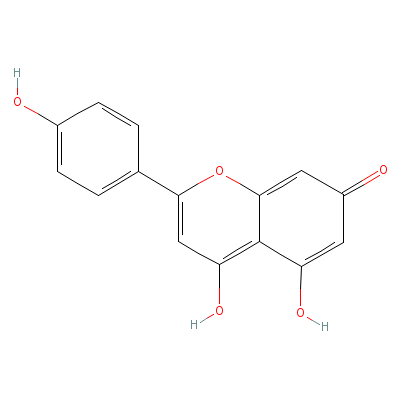
|
| Ascorbic acid |
Not Available |
2-(1,2-dihydroxyethy
l)-4,5-dihydroxy-fur
an-3-one |
C6H8O6 |

|
| Asperuloside |
14259-45-1 |
Not Available |
C18H22O11 |
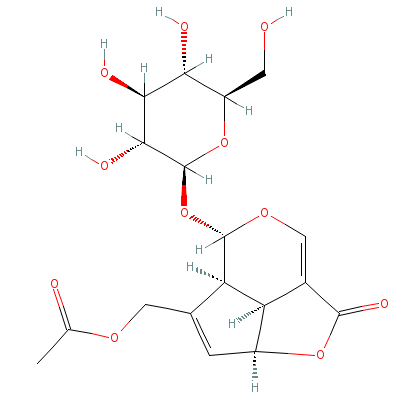
|
| Aucubin |
479-98-1 |
2-[[9-hydroxy-7-(hyd
roxymethyl)-4-oxabic
yclo[4.3.0]nona-2,7-
dien-5-yl]
oxy]-6-(
hydroxymethyl)oxane-
3,4,5-triol |
C15H22O9 |
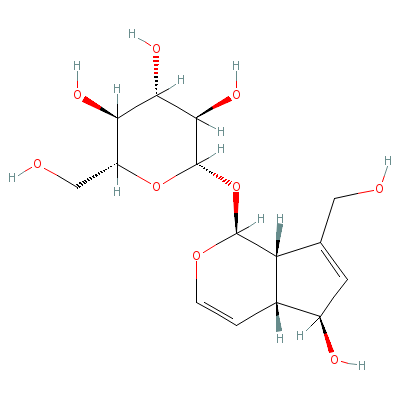
|
| Baicalein |
491-67-8 |
4,5,6-trihydroxy-2-p
henyl-chromen-7-one |
C15H10O5 |
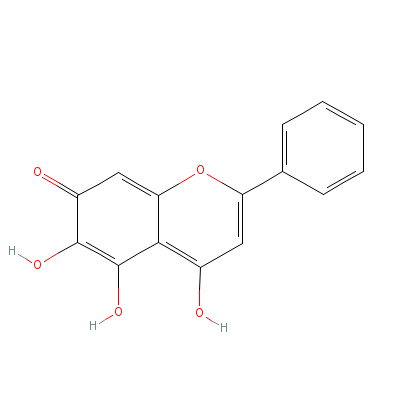
|
| Baicalin |
31564-28-0 |
6-(5,6-dihydroxy-4-o
xo-2-phenyl-chromen-
7-yl)oxy-3,4,5-trihy
droxy-oxan
e-2-carb
oxylic acid |
C21H18O11 |
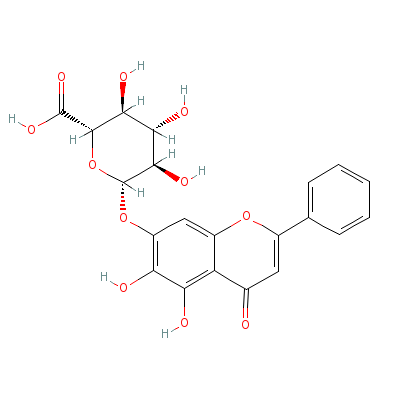
|
| Benzoic acid |
8013-63-6 |
benzoic acid |
C7H6O2 |
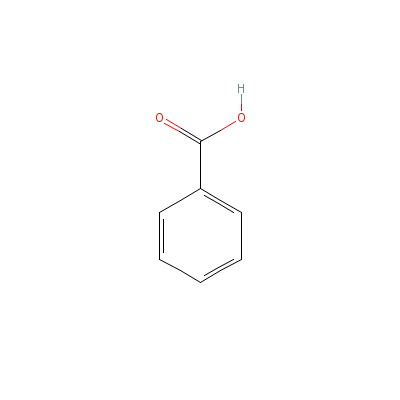
|
| Caffeic acid |
Not Available |
3-(3,4-dihydroxyphen
yl)prop-2-enoic acid |
C9H8O4 |
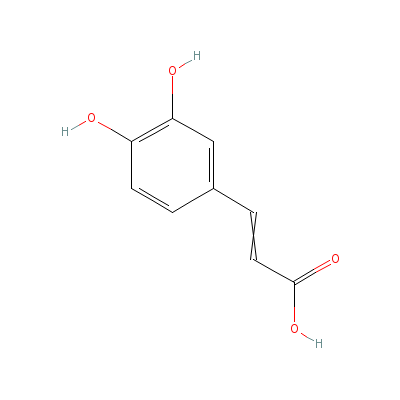
|
| Chlorogenic acid |
327-97-9 |
3-[3-(3,4-dihydroxyp
henyl)prop-2-enoylox
y]-1,4,5-trihydroxy-
cyclohexan
e-1-carb
oxylic acid |
C16H18O9 |
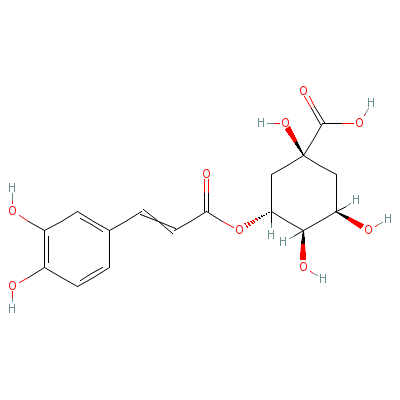
|
| Choline |
67-48-1 |
2-hydroxyethyl-trime
thyl-ammonium |
C5H14NO+ |
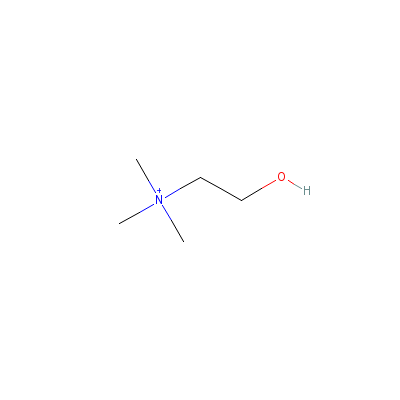
|
| Cinnamic acid |
63938-16-9 |
3-phenylprop-2-enoic
acid |
C9H8O2 |
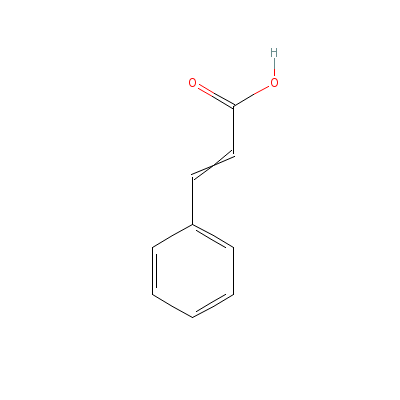
|
| Ferulic acid |
24276-84-4 |
3-(4-hydroxy-3-metho
xy-phenyl)prop-2-eno
ic acid |
C10H10O4 |
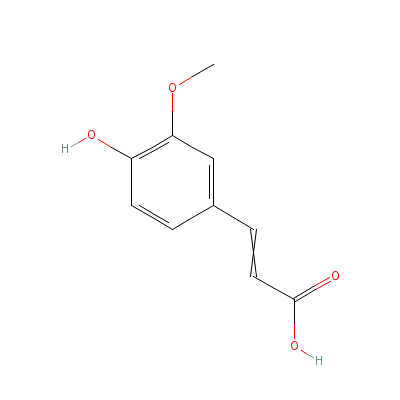
|
| Fumaric acid |
110-17-8 |
but-2-enedioic acid |
C4H4O4 |
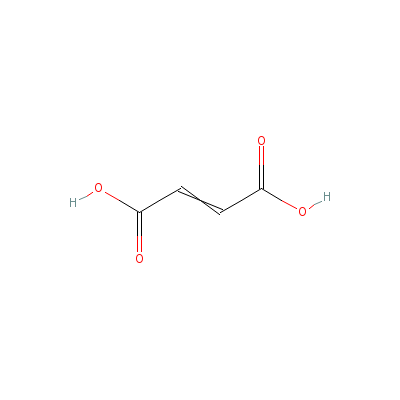
|
| Geniposidic acid |
27741-01-1 |
9-(hydroxymethyl)-2-
[3,4,5-trihydroxy-6-
(hydroxymethyl)oxan-
2-yl]oxy-3
-oxabicy
clo[4.3.0]nona-4,8-d
iene-5-carboxylic
acid |
C16H22O10 |
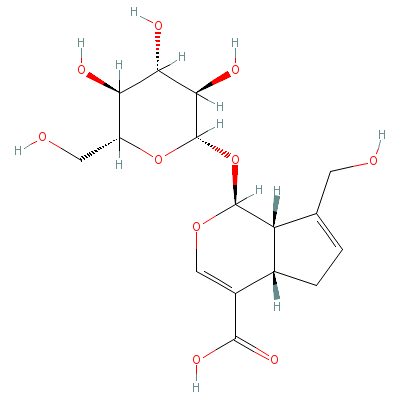
|
| Linoleic acid |
8024-22-4 |
octadeca-9,12-dienoi
c acid |
C18H32O2 |
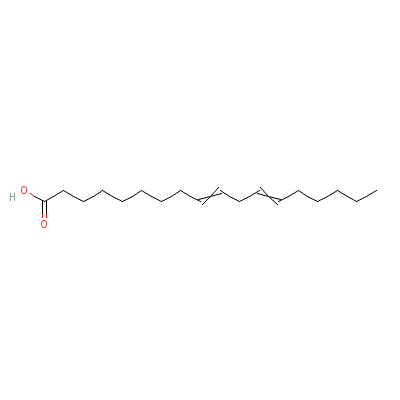
|
| Luteolin |
Not Available |
2-(3,4-dihydroxyphen
yl)-4,5-dihydroxy-ch
romen-7-one |
C15H10O6 |

|
| Oleanolic acid |
508-02-1 |
10-hydroxy-2,2,6a,6b
,9,9,12a-heptamethyl
-1,3,4,5,6,6a,7,8,8a
,10,11,12,
13,14b-t
etradecahydropicene-
4a-carboxylic acid |
C30H48O3 |
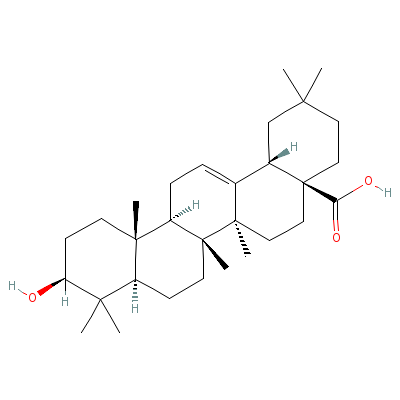
|
| Oleic acid |
8046-01-3 |
octadec-9-enoic acid |
C18H34O2 |
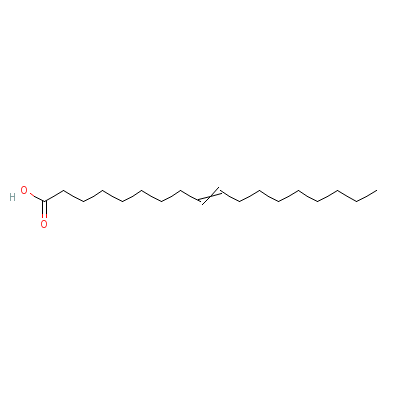
|
| P-coumaric acid |
501-98-4 |
3-(4-hydroxyphenyl)p
rop-2-enoic acid |
C9H8O3 |
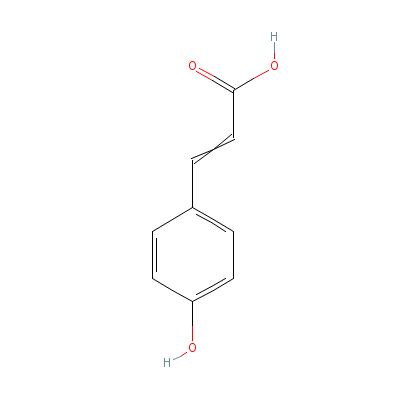
|
| Salicylic acid |
8052-31-1 |
2-hydroxybenzoic
acid |
C7H6O3 |
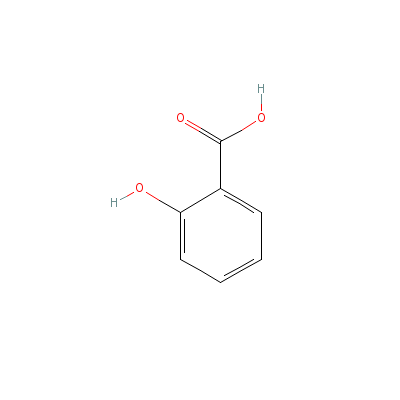
|
| Vanillic acid |
Not Available |
4-hydroxy-3-methoxy-
benzoic acid |
C8H8O4 |
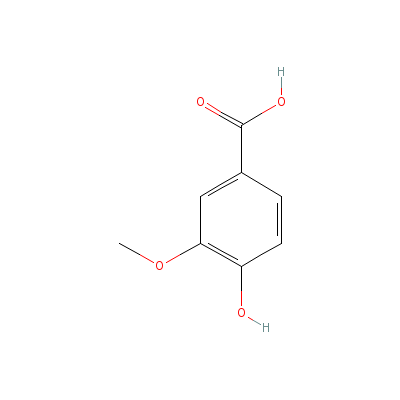
|
|
Pharmacology
| Medicinal Use |
 |
|
It is used in inflammation of the skin, malignant ulcers, intermittent fever, etc., and as a vulnerary, and externally as a stimulant application to sores. The leaves arrest external haemorrhage. The fresh leaves are applied whole or bruised in the form of a poultice. Rubbed on parts of the body stung by insects, nettles, etc., or as an application to burns and scalds. Internally, they are used in the treatment of a wide range of complaints including diarrhoea, gastritis, peptic ulcers, irritable bowel syndrome, haemorrhage, haemorrhoids, cystitis, bronchitis, catarrh, sinusitis, asthma and hay fever. They are used externally in treating skin inflammations, malignant ulcers, cuts, stings etc. The heated leaves are used as a wet dressing for wounds, swellings etc. The root is a remedy for the bite of rattlesnakes. The seeds are used in the treatment of parasitic worms. Plantain seeds contain up to 30% mucilage which swells up in the gut, acting as a bulk laxative and soothing irritated membranes. A distilled water made from the plant makes an excellent eye lotion. |
| Contraindication |
 |
|
Kyushin, licorice, plantain, uzara root, hawthorn, and ginseng may interfere with either digoxin pharmacodynamically or with digoxin monitoring (Miller , 1998) |
Dealers
Products
|
|